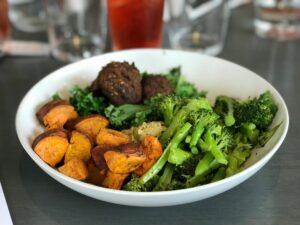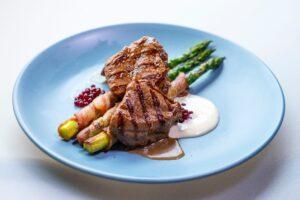Clean Eating for Beginners
For me, cooking and eating good food have been a long love affair filled with both sublime and ridiculous moments. I believe that good eating is a risk and have never been excessively obsessed with extreme ‘good’ and ‘bad’ views toward food. Nonetheless, I care for healthy eating. Up till recently, I could not tell the difference between clean eating and healthy eating. In my culture (Kenyan), healthy eating is largely associated with bland, unspiced food cooked with little or no oil. Like other cultural preoccupations with clean eating, this shaped my perspective of healthful eating, and boy was I wrong?
The primary goal of a clean eating dietary approach is to consume whole, natural foods. What many fail to imagine is the possibility of enjoying a clean diet because of the varied interpretation of the health pursuit. You can enjoy food in any form if you are imaginative and creative in preparing it. I can’t deny that clean eating is a tough row to hoe, but with proper knowledge and persistence it is a highly rewarding life choice. Let’s explore what clean eating entails and how you (someone with lots of love and natural proclivity for cuisine) can enjoy it.

What is Clean Eating?
Clean eating is a restrictive dietary approach that aims at consuming only whole, natural foods. Essentially, eating clean is ditching all packaged and processed foods and only consuming whole foods. At least that’s the basic principle. Like other diets framed as health pursuits, clean eating is popular endeavor. The popularity results in broad industry usage of the term and various interpretations by pursuers of wellness. For instance, some clean diets call for the elimination of certain food groups like dairy, red meat, alkaline foods, refined sugar and wheat. (I personally wouldn’t eliminate meat because I feel meat eaters, generally, are happier people).
Some dieters are more restrictive and avoid foods treated with pesticides, growth hormones and antibiotics. They may also keep a keen eye on ingredients; real vanilla, artificial vanilla? it does not matter, it better be devoid of additives.
What you shouldn’t believe is that clean eating is a ‘lose 20 lbs in two weeks’ kind of diet. You may lose a bit of weight, more so if you are transitioning from eating lots of processed, packaged, ready-to-eat meals like chips and cookies. Tosca Reno, author of The Eat Clean Diet Recharged says that a clean diet helps you lose weight and stay lean because you skip enormous loads of calories in processed foods. This sounds like good sense to me. Even so, think of clean eating as a healthier approach to nourishing your body; more like a lifestyle and not a surebet weightloss ticket.
A clean diet requires conscientiousness and a bit of creativity for maximum enjoyment. You must stay the course to reap the benefits. Not to mean you should become a perfect eater, far from it. You only need to ensure you are following your plan majority of the time. The last thing you need is a fixation on righteous eating. Medical experts call it orthorexia nervosa. According to an article in the National Library of Medicine (NIH), the condition may result in malnourishment and poor life quality.
As a beginner, you can kick off with the most common and simplest clean eating strategy; a ‘one-size-fits-all,’ that supports all the organs in the body, and does not require extra time or money.
Not all processed foods are bad. Fermentation and pasteurization are both beneficial and healthful processes. Pasteurization makes dairy safer for consumption and fermentation enhances and preserves food nutrients.
Moreover, fermented foods are a dietary essential as they contain probiotics, which are the good bacteria that your body needs to function properly.
Check out my article on probiotic smoothies for creative recipes. Some of the foods that you can incorporate in your clean eating diet plan include;
- Unprocessed meat and poultry
- Fruits and vegetables
- Unprocessed nuts and seeds
- cold-pressed cooking oils e.g. avocado, coconut, olive and walnut oils
- Whole grains and legumes
- Herbs and spices (Use these to add life to your food. Aim to amuse your palete)
- Organic dairy and eggs
- Fermented foods like kimchi an sauerkraut
- Plenty of drinking water
What are the Benefits of Clean Eating?
A cleaner approach to food will give you all the benefits of a healthful diet. Nutrient-dense, natural foods have high water content and a balanced amounts of minerals and vitamins, which the body needs for proper functioning and homeostasis (the optimal body balance). Some more benefits of a clean diet include;
- Improved gut health: Clean diet foods are rich in fiber and antioxidants which are essential for good gut health. Fermented foods like sauerkraut and kimchi also provide beneficial gut bacteria.
- Easier weight management: Whole, natural foods have less calories, making it easier for you to maintain a caloric deficit.
- Better immune system: Nutritious natural foods have plenty of antioxidants and minerals needed for your immune system to function properly.
- Disease prevention: With an improved immune system and better gut health, you are less vulnerable to chronic diseases like cancer.
- Better moods and great mental health: The gastrointestinal tract has billions of bacteria that are responsible for producing chemicals that keep us happy and mentally balanced. Happy hormones like serotonin and dopamine are created in the gut and transmitted to the brain via the gut-brain highway. Essentially, a clean diet, which equals great gut health, is the basis of good mental health.
How to Start Clean Eating
Picking up a clean diet is as easy as:
Ditching packaged and processed foods
When you choose to eat clean, you have to spend more time at the groceries store because you have to read the labels to ensure you go home with nothing that has added salts, sugars, preservatives, dyes and fats. According to Healthline, most processed foods lose fiber and nutrients during processing, but gain sugar, sodium and other ingredients meant for preservation and taste enhancement.
You are probably thinking that most out-of-season canned, bagged, or boxed foods like tomatoes can be convenient, but you have to keep off all added sugars, fats, and salts. You can use your additions to get your desired flavors.
Choosing whole foods
Eliminating packaged and processed foods means you can only eat whole foods like fresh fruits and vegetables, whole grains, full-fat dairy products, and unsalted nuts. Whole foods are more beneficial as they have more nutrients and fiber that are great for your body.
Eating whole grains means staying away from all the white stuff like white rice, white pasta, and white bread. They are not as rich and nutritive as their whole grain versions; gluten-free or whole grain pasta, brown rice, and whole grain bread.
Cook food yourself
There’s no better way to control what goes into your food than cooking it yourself. No added salt, sugar, or fats will go into your food and you will be able to stay on track with your new eating habits. However, if you have a chance, at a full-blown dinner of lamb biriani with garlic butter naan or chapatis in a far Eastern city, go for it – even if the chef didn’t list all the ingredients used. A good rule of thumb is to mostly treat your body like a temple and once in a while, like an amusement park.
Drink lots of water
When eating clean, water should be the main thing you drink throughout the day. The recommended amount is at least 64 ounces. The more water you drink, the thirstier you get. Moreover, water will not only hydrate you but also prevent hunger pangs.
What you want to avoid when eating clean is drinking soda and fruit juices. Soda has a boat-load of refined sugars that have zero benefit for your health. Fruit juices have better nutrients than soda but they still have high calories and sugar levels. Plus, they don’t contain the essential nutrients like fiber and vitamins that you would get when you eat a fruit.
Cut back on the caffeine and alcohol
Caffeine is beneficial when consumed moderately. It boosts alertness, mental focus and energy. Higher caffeine consumption is harmful as it causes jitteriness, insomnia, stomach upset, and anxiety. The recommended amount of coffee is 300 mg per day, which is about two large coffee mugs or four large tea mugs.
Alcohol is also a health plus if you limit your intake. While clean eating, you can have one serving per day if you are female and two if you are male. By one serving I mean 5 ounces of wine, 12 ounces of beer, and 1.5 ounces of spirits. A cocktail sounds like the best option if you have to take such measured amounts of alcohol. Nonetheless, if alcohol is not part of your lifestyle, avoid it altogether.
What Does a Day of Clean Eating look like?
Here is a typical clean eating meal plan for a day.
Breakfast
- 1 cup of plain non-fat Greek Yoghurt (190 calories)
- 1/4 cup of sliced strawberries (13 calories)
- 3 tablespoons unsalted dry roasted almonds (120 calories)
A.M Snack
- 1 medium apple(95 calories)
- 2 tablespoons natural peanut butter (188 calories)
Lunch
- Simple Salmon Salad (440 calories)
P.M Snack
- 1 Medium orange (47 calories)
Dinner
- 1 serving of grilled tomahawk Wagyu steak (320 calories)
- 6 spears of garlic roasted asparagus (50 calories)
Total calories: 1561

Clean Eating: Final Take
Come to think of it, you are not far-off eating clean. Switching up things and picking a new dietary approach is dreadful to many. If you are already into healthy eating, it is easier as you will only need to make a few tweaks. Furthermore, the transition won’t dent your wallet if you are simply cleaning up the recipes you already eat.
Other things you can do to launch your clean eating habits include; doing meal preps and menu plans, make slow changes, and read labels keenly. Being unable to go all in at the beginning doesn’t mean you have failed. You can follow the 80/20 rule that gives you some flexibility, so that pizza is not entirely off the table at least once in a month. Nonetheless, you have to remain disciplined and committed to the course to see results.